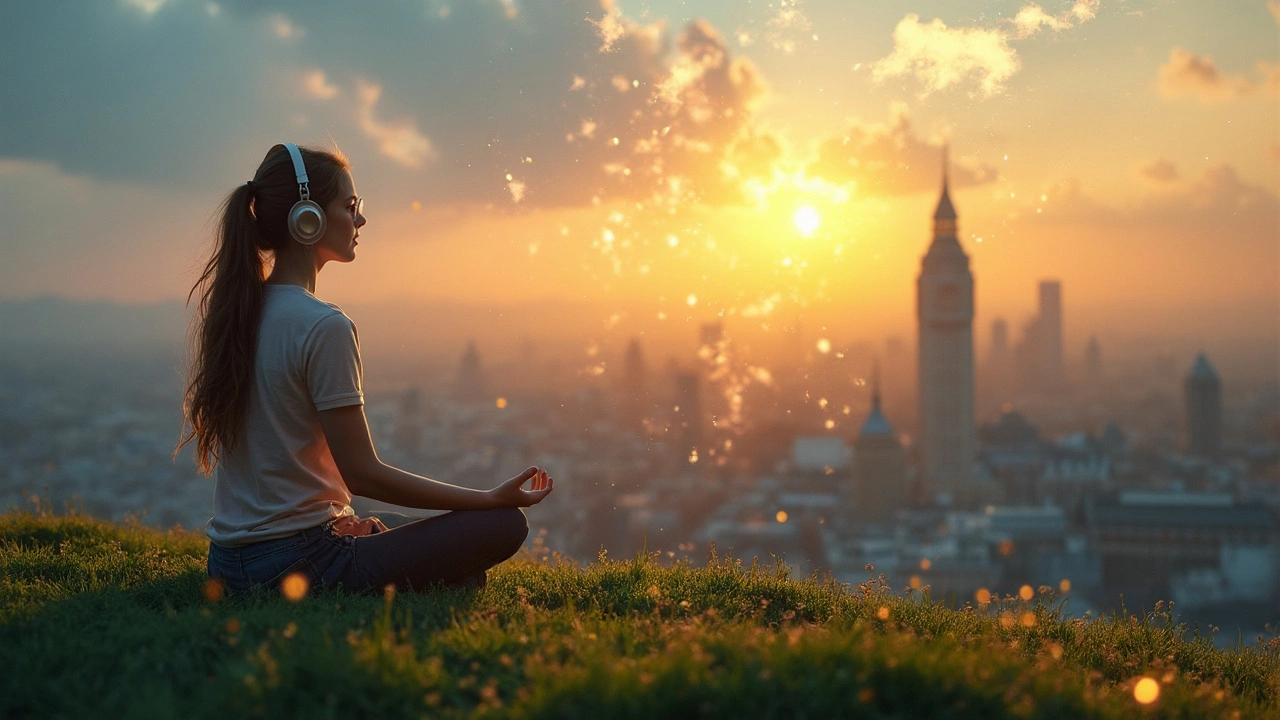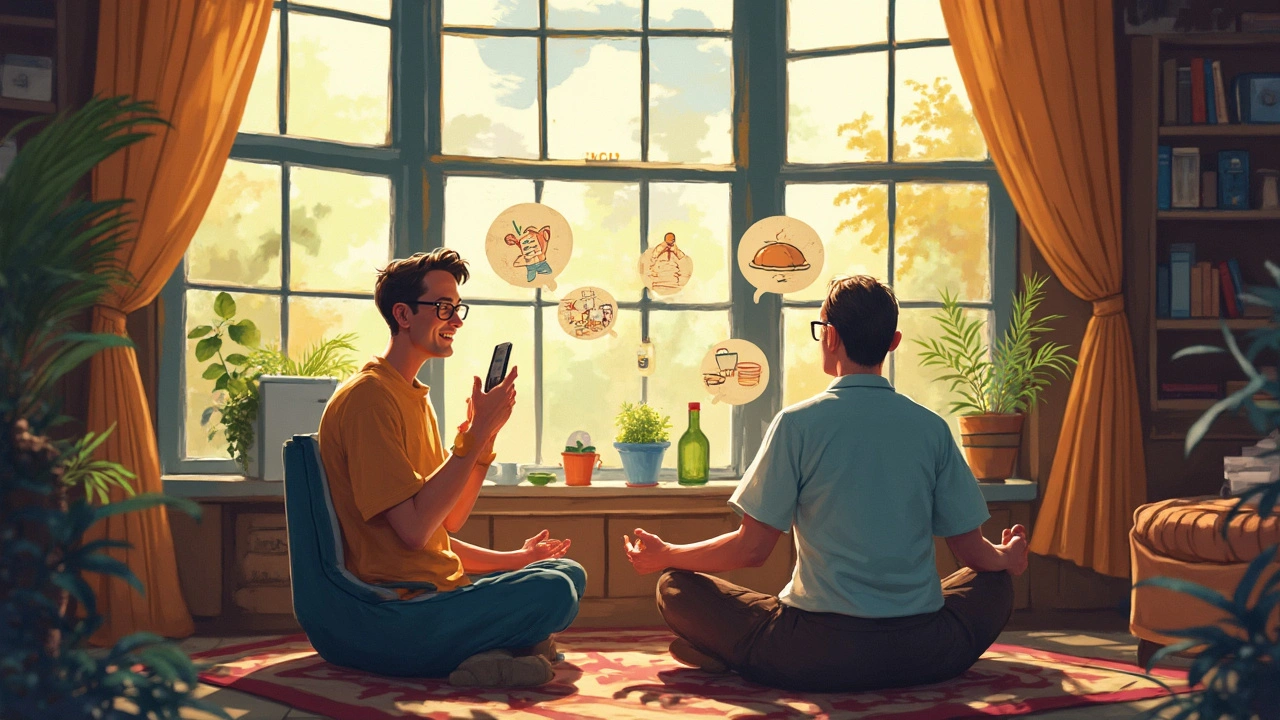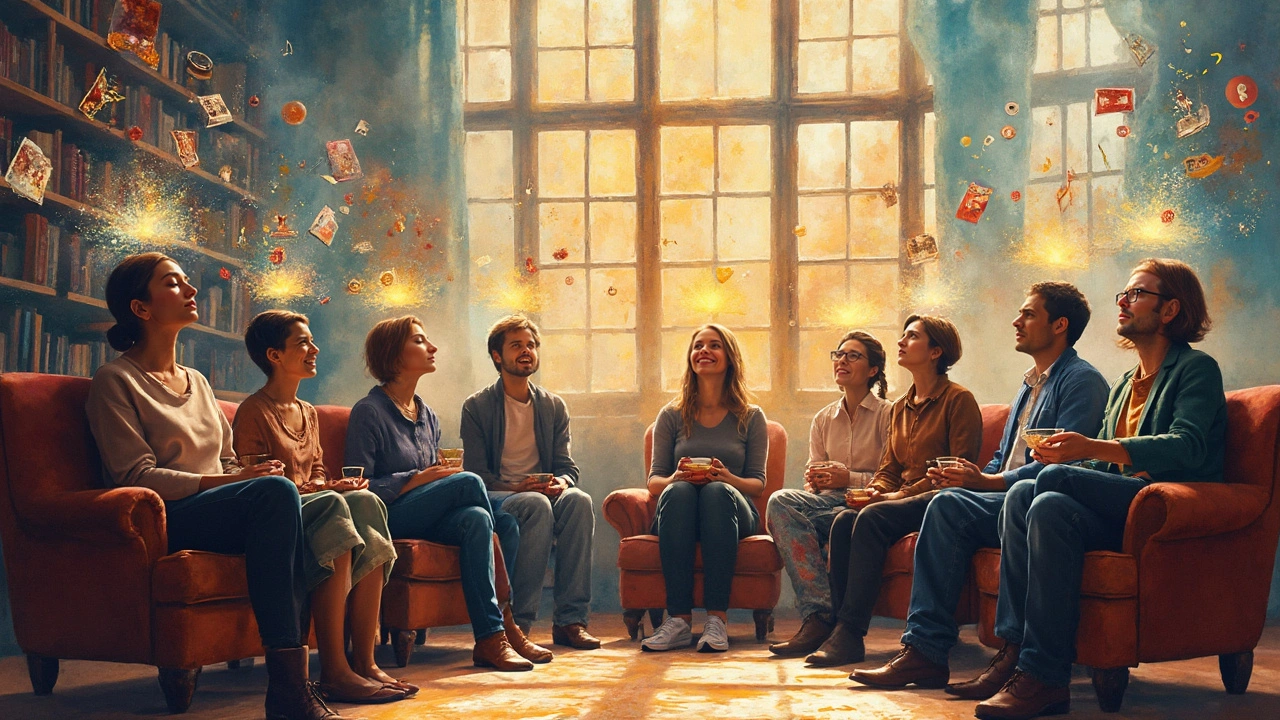Ever hit that wall where your brain feels emptier than a fridge before payday? That infamous creative block isn’t just frustrating—it can leave you doubting your talents, your purpose, maybe even your next paycheck. But there’s something simple and pretty surprising that’s been helping writers, inventors, artists, and even engineers bust through mental barriers for centuries: guided meditation. It sounds almost too easy, right? Close your eyes, breathe a little, picture a soft voice walking you through a daydream—and bam, creative flow unlocked. Only, it’s not just daydreaming or wishful thinking. Brain researchers have found real links between guided meditation and those lightbulb moments we all crave. If you’re curious whether some mindful minutes can really super-charge your imagination, let’s explore how guided meditation might be the creative cheat code society’s been sleeping on.
The Science Behind Guided Meditation and Creativity
It’s wild how creative inspiration used to be chalked up to luck or a ‘muse’ whispering in your ear. But scientists are all over this now, mapping out how creativity lights up our brains. Research out of Leiden University in the Netherlands found that people who practiced open-monitoring meditation (the kind where you accept whatever thoughts bubble up) scored noticeably higher on tests of idea generation and creative thinking. Their brains showed more activity in regions linked with free association, the secret sauce behind those "Eureka!" moments.
Then there’s the dopamine angle. Dopamine isn’t just about pleasure—it actually helps regulate attention and open up those mental pathways where new ideas tend to sneak in. Guided meditation, especially carefully crafted scripts, have been shown in some small studies to give dopamine a gentle nudge. More dopamine? More chances the next random thought will be the missing piece you’ve been hunting for.
Ever notice that your biggest ideas hit you in the shower, on a walk, or right as you’re falling asleep? Turns out, those are moments when your brain’s default mode network (DMN) gets active. That’s the part responsible for daydreaming, problem-solving, and self-reflection. Guided meditation prods that very same network into overdrive. Instead of wrestling with a mental puzzle, you relax and literally let your mind wander—with purpose.
If you want hard numbers, a 2016 study published in the journal “Mindfulness” showed participants who tried guided meditation for just 10 minutes a day for two weeks performed 24% better on creative problem-solving tests than a non-meditating group. That’s not subtle. And those improvements didn’t only happen for artists; business execs, software developers, and teachers all reported sparks of fresh thinking.
Here's a snapshot of what happens in your brain during guided meditation (according to fMRI data):
| Brain Region | Change in Activity |
|---|---|
| Prefrontal Cortex | Boosts focused attention, supports planning/decision making |
| Default Mode Network (DMN) | Increases mind-wandering, supports divergent thinking |
| Amygdala | Decreases activity, lowers anxiety and creative blocks |
| Basal Ganglia | Regulates dopamine, sparks novel connections |
It’s not magic or marketing; it’s neuroscience meeting mindfulness. Even famously left-brained folks at Google and Goldman Sachs have built meditation rooms to help employees snap out of tunnel vision and into innovative problem-solving.
No need for incense or stretchy pants. Just a voice in your earbuds and a willingness to experiment can be enough to stretch your thinking in all sorts of new directions.

How Guided Meditation Unlocks Your Creativity
You might be itching to know: What actually happens in a guided meditation that’s so powerful for creativity? It’s not some psychic leap. It's practical, step-by-step mental exercises woven into a calming script. Most sessions set you up with a comfortable spot and have you focus on your breath for a minute or two. That’s just the warmup. What follows is the real workout for your imagination.
- Visualization: Think of it like a directed daydream. A guide might ask you to picture the problem you’re wrestling with, then to imagine it in a new light—a feather floating down, a door opening, a puzzle piece clicking into place. Turns out, this stuff isn’t just woo-woo: MRI scans show visualization lights up the creative side of your brain almost as much as actually doing the activity does.
- Body Scanning: Ever get that gut feeling about an idea? Guided scripts often have you scan your body from head to toe, noticing tension or energy. It might sound strange, but this simple exercise can unlock ‘stuck’ emotions or thoughts tied up in stress that block the creative flow.
- Letting Go of Judgment: In everyday life, self-criticism can kill ideas before they even form. Many guided meditations prompt you to notice these critical voices, then gently let them drift away. The less you judge yourself, the more your ideas can breathe and evolve.
- Sensory Exploration: Guided sessions sometimes ask you to imagine smells, colors, textures, or sounds. This playful sensory focus isn’t just relaxing—it actually boosts divergent thinking, the ability to see multiple solutions instead of one.
Even five to ten minutes of this stuff can dial down stress hormones. Lower stress equals less mental clutter, so new ideas have actual room to show up. Regular meditators often report sharper focus, a boost in mood, and moments of inspiration that feel almost effortless compared to the grind of just "trying harder."
The beauty of guided meditation? You're not left on your own. There are apps (like Headspace, Calm, Insight Timer) that have whole libraries of creative-focused meditations. Some artists and writers even record their own scripts tailored to the specific project or block they’re facing.
What about group sessions? Creative agencies and design studios have started using group guided meditations as a quick warm-up before brainstorming. It’s awkward for maybe two minutes, then everyone’s sharing wilder, fresher ideas without the usual hesitation.
There’s a myth that only “meditative” personalities—think serene yogis—benefit from this. But studies have shown introverts and extroverts, super logical types and wild artists, all see spikes in novelty and flexibility in their thinking after following guided meditations over a few weeks.
You don’t need a silent retreat or expensive teacher. Setting your phone timer for ten minutes and following a YouTube guide works wonders. This isn’t about emptying your mind; it’s about pointing your mind somewhere new and seeing what grows in that gentle space.

Practical Tips to Boost Creativity with Guided Meditation
Ready to try blending meditation into your creative routine? There’s no single right way, but a few tested tricks can turn quiet time into your secret innovation weapon. First off, frequency beats duration. Five or ten minutes daily does more for mental agility than one marathon session once a week.
- Pick a time when you’re naturally alert. Right before you need to brainstorm or design is ideal, but avoid the drowsy hour just after eating.
- Use headphones. Blocking out distractions ramps up how immersive the experience feels, so you’re less likely to drift into planning dinner or answering emails.
- Experiment with different voices/scripts. Not every style works for every brain. Try a few and stick with what makes your mind sparkle.
- Keep a notebook nearby. Some of the best ideas hit right as you finish. Don’t trust your memory—jot them down, no matter how odd they seem.
- Combine with other creativity techniques. Doodle, freewrite, or mind-map immediately after meditating. The mental openness lasts longer than you think.
- Build a ritual. It could be a cup of tea, dimming the lights, or lighting a candle—nothing fancy, but something that cues your brain into creative mode.
If you’re constantly slammed by distractions, guided meditations can actually train your focus muscle, too. That’s a two-for-one: more creative ideas and less mind-wandering when you're trying to get stuff done. The National Endowment for the Arts recently found that creative professionals who worked meditation into their daily routines reported 29% higher work satisfaction and 35% more successfully completed projects.
Need more structure? Here’s a super simple routine to fire up your imagination:
- Set an intention. “I want to find a new angle for this story/design/problem.”
- Put on a guided meditation focused on creativity (plenty on Spotify/YouTube for free).
- Close your eyes and breathe deeply. Let the guide take your mind through imagery, letting go of control.
- Notice any ideas or feelings that pop up. Don’t judge, just notice.
- When finished, freewrite or sketch for five minutes. Don’t edit—just empty your brain.
The best part? This isn’t reserved for artists. Anyone trying to problem-solve—engineers, teachers, startup founders, even parents trying to invent bedtime stories—can benefit.
There's no one-size-fits-all path to unlocking your creative potential. But guided meditation might just be the missing tool you didn’t realize you needed. Consider it less about trying to be the next Da Vinci and more about stacking the odds in your favor so your next spark is waiting, right when you need it most.
